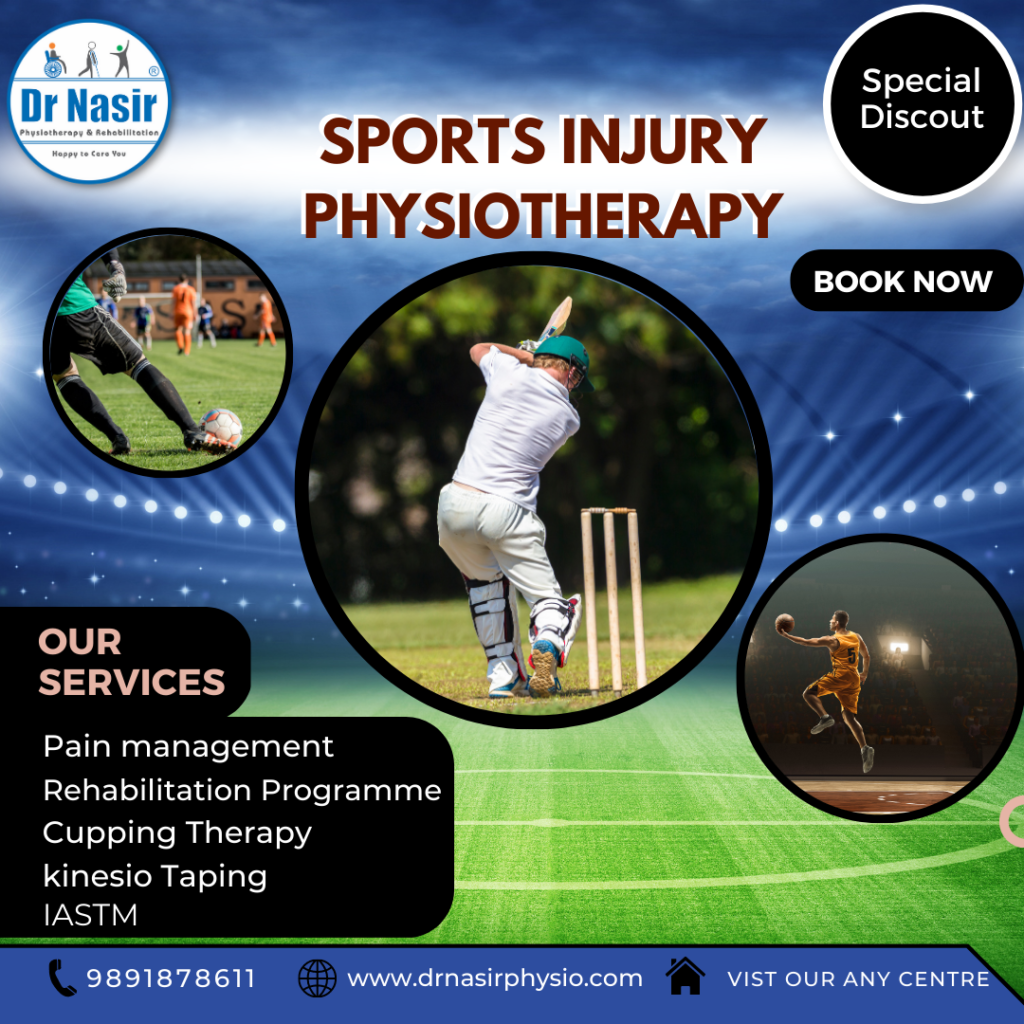Sports Injury Treatment in Delhi | 9891878108
Sports injuries can be devastating for athletes, causing pain, loss of function, and possibly even the end of a career. However, with the right approach to treatment, many athletes can recover from their injuries and get back to doing what they love. Physiotherapy is an essential part of sports injury treatment, providing athletes with the support and guidance they need to heal and regain strength and mobility.
Types of Sports Injuries
Sports injuries can occur in any body part, but some are more common than others. Common sports injuries include:
- Sprains and strains: Injuries to ligaments (sprains) and muscles/tendons (strains) are common in sports.
- Fractures: Broken bones are often the result of high-impact sports or falls.
- Dislocations: This occurs when a joint is forced out of its normal position, often causing damage to surrounding tissues.
- Concussions:- Head injuries can be very serious and require immediate medical attention.
Treatment of Sports Injuries
The goal of sports injury treatment is to promote healing, restore function, and prevent future injury. Physiotherapy plays a critical role in the treatment of sports injuries, helping athletes regain strength and mobility, and reducing the risk of further injury.
Initial Assessment
When an athlete first seeks treatment for a sports injury, a physiotherapist will conduct a thorough assessment to determine the extent of the injury and create a personalized treatment plan. The assessment may include:
- A medical history: The physiotherapist will ask about any previous injuries, medical conditions, and medications the athlete is taking.
- Physical examination: The physiotherapist will examine the injured area and check for signs of swelling, inflammation, and loss of function.
- Imaging tests: X-rays, MRI, or CT scans may be ordered to help diagnose the injury.
Treatment Plan
Once the physiotherapist has assessed the athlete’s injury, they will develop a treatment plan that is tailored to their specific needs. This plan may include:
- Manual therapy: Hands-on techniques such as massage, stretching, and joint mobilization can help reduce pain and promote healing.
- Exercise therapy: Specific exercises can help strengthen the injured area, improve flexibility and restore range of motion.
- Modalities: Therapeutic modalities such as ultrasound, heat or ice therapy, and electrical stimulation may be used to reduce pain and inflammation.
- Education: Athletes may be provided with education on proper body mechanics, injury prevention strategies, and how to manage their injuries during recovery.
Recovery and Return to Sport.
The length of time it takes to recover from a sports injury depends on the extent of the injury, the athlete’s age and health status, and other factors. In some cases, it may take several months or even longer to recover fully.
Once an athlete has recovered from their injury, they will need to work with their physiotherapist to gradually return to their sport. This may involve a gradual increase in training intensity, careful monitoring of symptoms, and a focus on injury prevention strategies.
Conclusion
Sports injuries can be challenging for athletes, but with the right approach to treatment, many can recover and return to their sport. Physiotherapy plays a crucial role in sports injury treatment, providing athletes with the support and guidance they need to heal and regain function. If you have suffered a sports injury, contact a physiotherapist to learn more about your treatment options and get started on the road to recovery.
If you are searching for Sports Injury Treatment in Delhi | 9891878108 then your search is over here. At DNPR we have expert Physiotherapists to treat Sports Injury
Call/WhatsApp now on +91-9891878108
Positive feedback from our recovered patient
